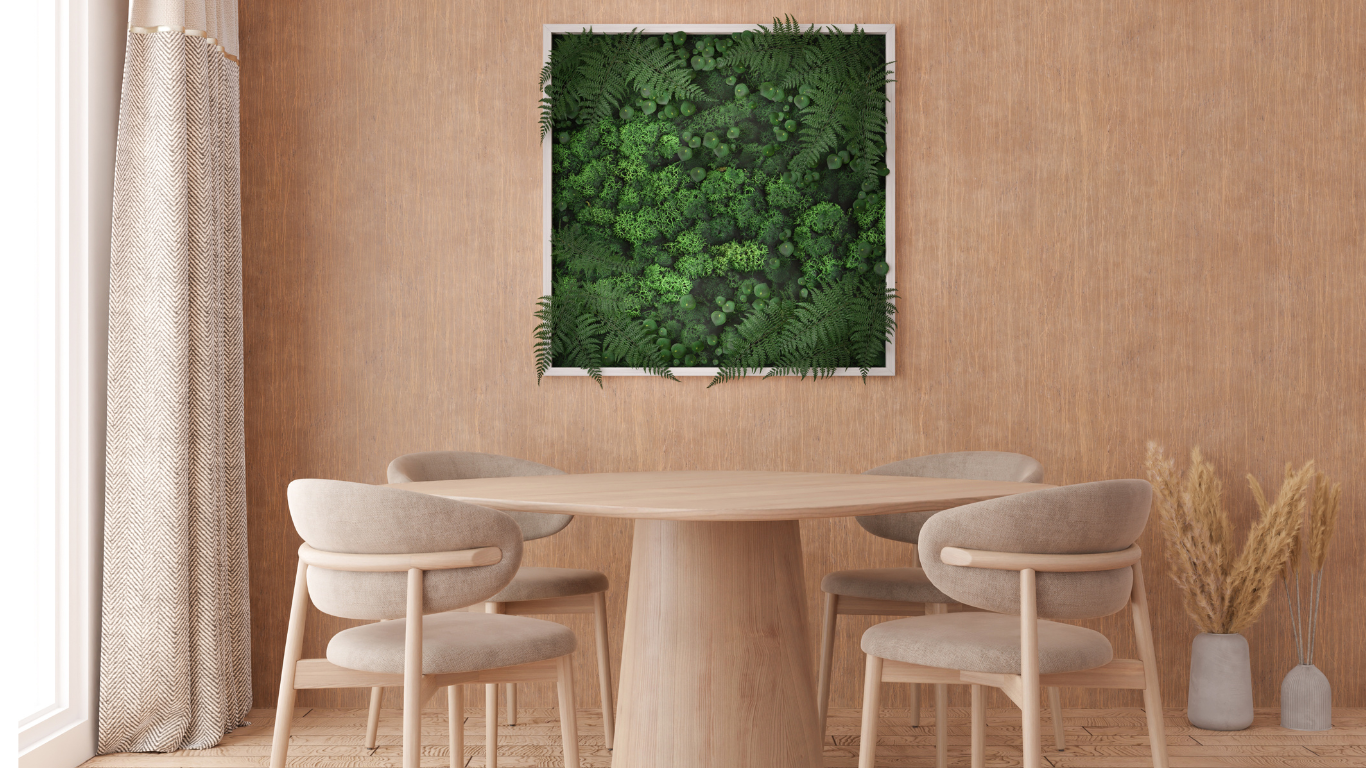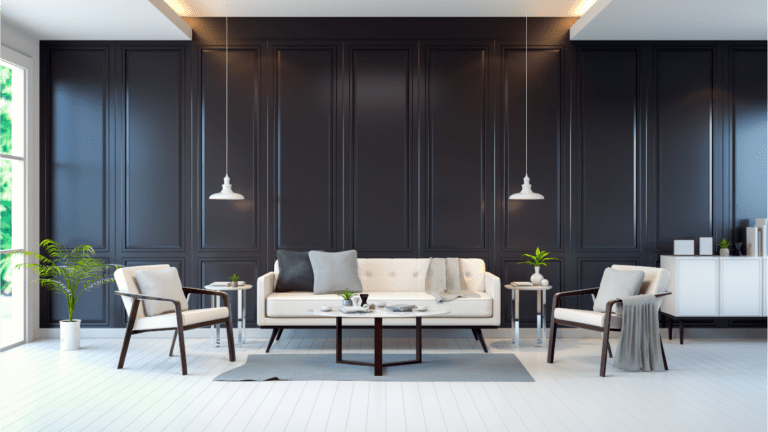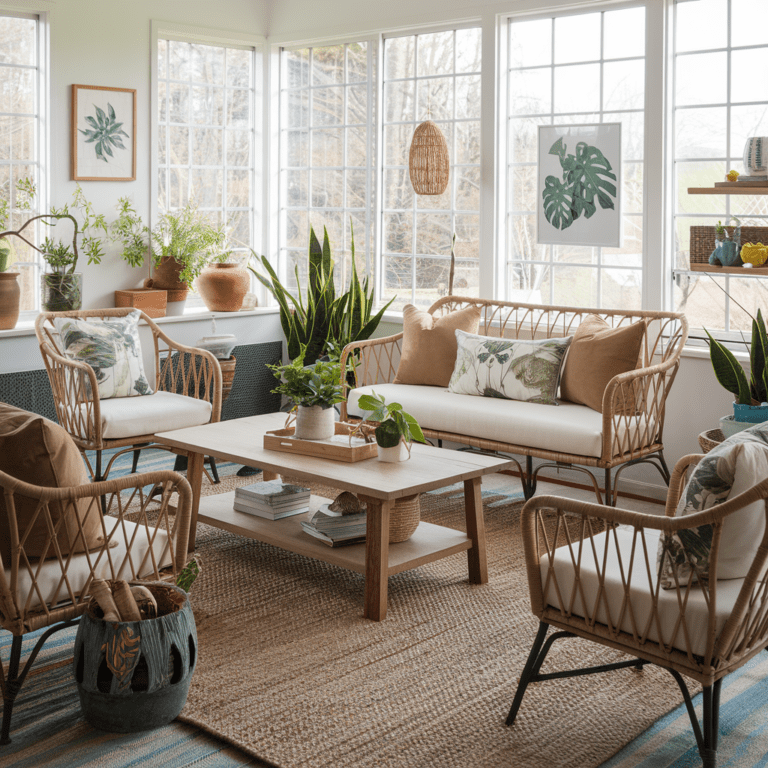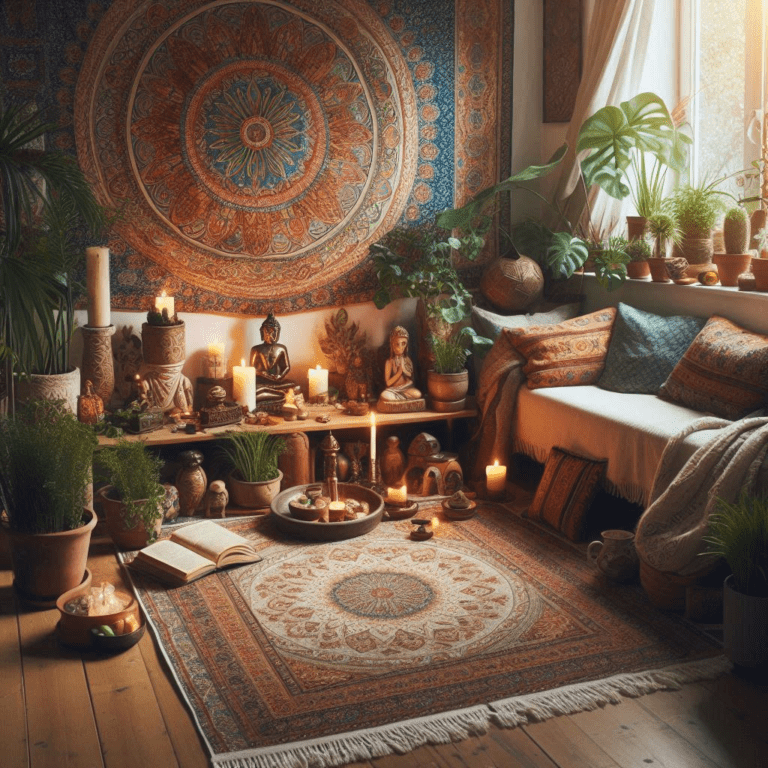Living Moss Wall Art: Embrace Nature’s Serenity Indoors With Expert Tips
This post may contain affiliate links. As an Amazon Associate, I earn from qualifying purchases at no extra cost to you. Read my full disclosure.
Living moss walls offer both beauty and a distinctive approach to decorating your home with living plants–where nature’s serenity gracefully merges with indoor spaces.
A living moss wall is more than just an artistic addition; it’s a captivating display of greenery that brings the essence of the outdoors right into your home.
Embracing the calming allure of nature, these mesmerizing moss walls not only elevate the aesthetics but also contribute to improved indoor air quality and well-being.
In this guide, we will unveil the secrets to creating and maintaining your very own living moss wall masterpiece. With expert tips and insights, you’ll discover the magic of this eco-friendly and sustainable design trend, transforming your environment into a sanctuary of green tranquility.
So, let’s embark on this journey together and explore the wonders of living moss walls.
What is an indoor moss wall?
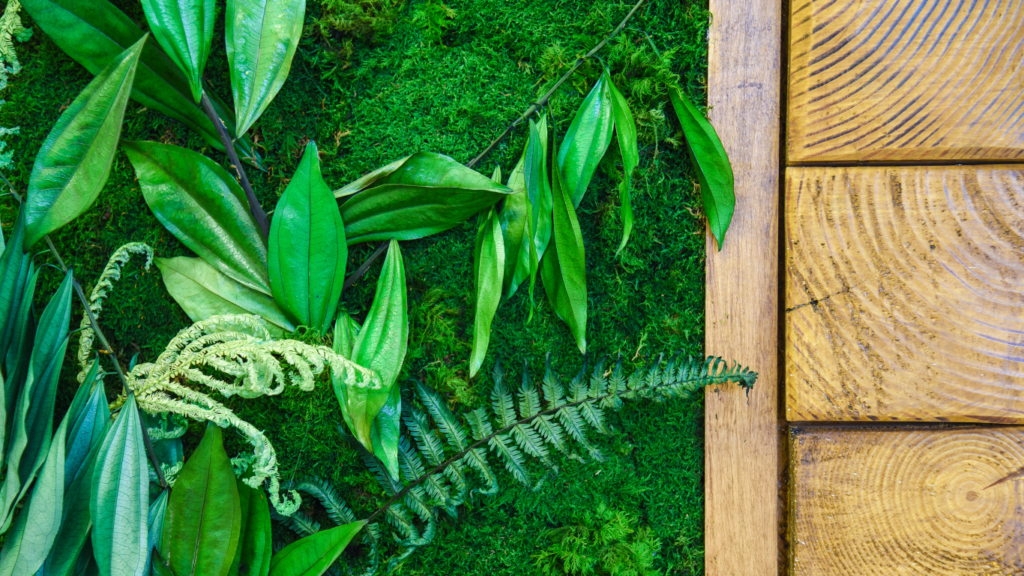
An indoor moss wall is a living green wall composed of various species of mosses grown on a vertical surface within an indoor space.
What is the Purpose of an Indoor Moss Wall?
The primary purpose of an indoor moss wall is to incorporate biophilic design principles into indoor spaces. Biophilic design seeks to reconnect people with nature and create environments that promote well-being, reduce stress, and enhance productivity.
By introducing a living moss wall, people can experience the calming and therapeutic effects of nature even in urban and indoor settings.
Benefits of Indoor Moss Walls
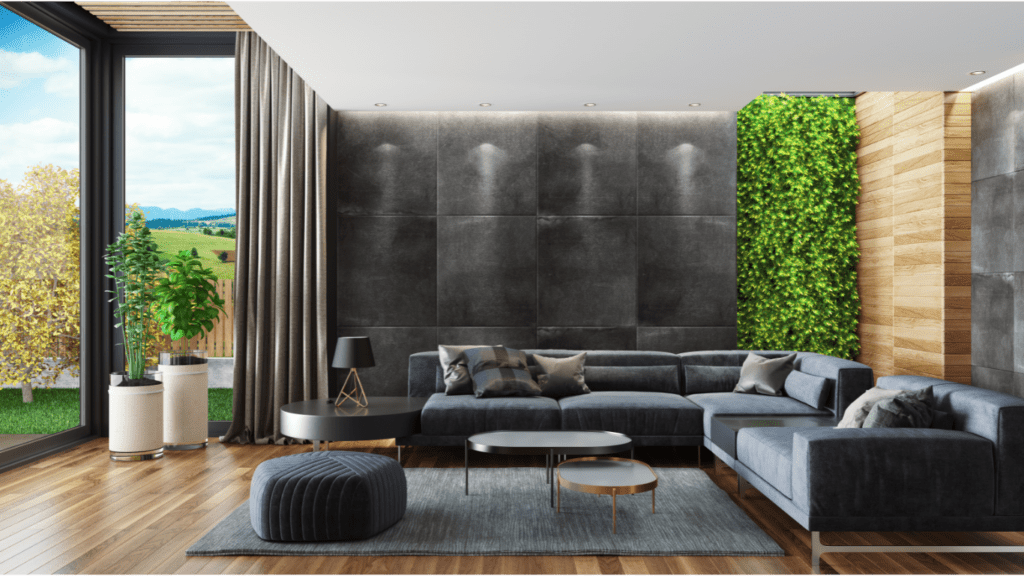
- Air Quality Enhancement: Moss walls act as natural air purifiers, absorbing and filtering pollutants from the surrounding environment. They effectively remove harmful airborne substances like volatile organic compounds (VOCs), formaldehyde, and other toxins, improving indoor air quality and better respiratory health for occupants.
- Sound Absorption and Noise Reduction: One of the unique properties of moss is its ability to absorb sound waves. Indoor moss walls help to dampen noise, reducing echoes and background sounds in indoor spaces. This feature creates a more peaceful and tranquil atmosphere, making it especially beneficial in noisy or bustling environments.
- Low Maintenance and Sustainable Greenery: Indoor moss walls are relatively low maintenance compared to traditional indoor plants and living walls. They require minimal watering, no soil, and no direct sunlight, making them a sustainable and eco-friendly design choice. Additionally, mosses can be harvested sustainably without harming natural populations.
- Space Optimization: Indoor moss walls are ideal for spaces with limited floor space or insufficient natural light compared to traditional potted plants. They allow you to introduce greenery without compromising valuable floor space.
- Educational and Inspirational: Moss walls can serve an educational purpose, showcasing the beauty and resilience of these often overlooked plants. They can inspire people to appreciate and learn more about the natural world and the importance of sustainable design.
Choosing the Right Moss
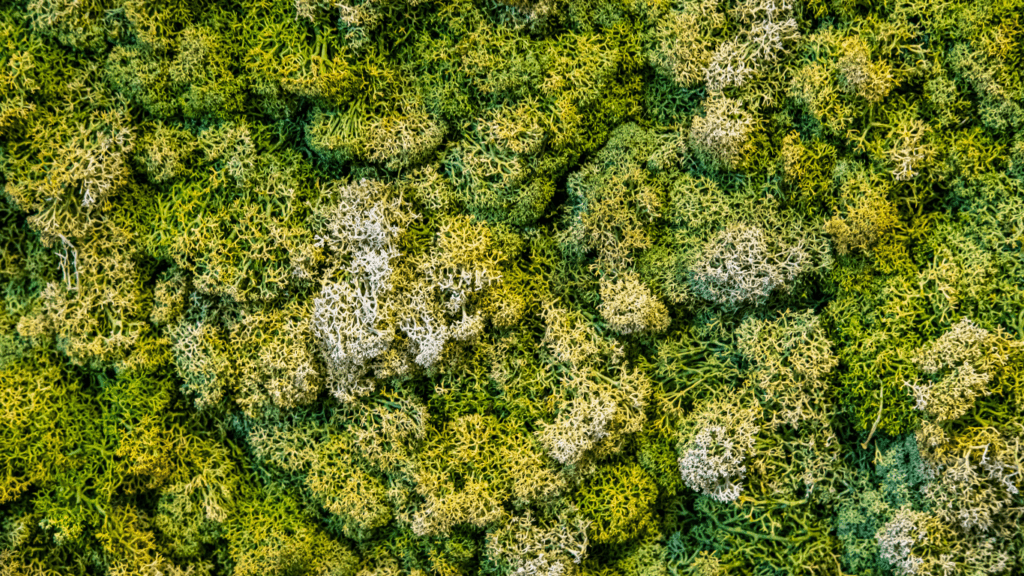
Selecting the right moss is crucial when creating a captivating live moss wall. Different moss species have varying growth habits and environmental requirements, making it essential to choose ones that thrive in indoor conditions.
For instance, cushion moss (Leucobryum glaucum) is a popular choice known for its velvety appearance and adaptability to low light levels, making it an excellent option for a live moss wall in areas with limited natural light.
Another suitable candidate is sheet moss (Hypnum spp.), which forms dense carpets of lush greenery and can withstand fluctuating humidity levels, making it an ideal choice for creating a visually stunning living moss wall.
In addition, mood moss fern, (Pleurocladula albescens), is a type of bryophyte that belongs to the family Hypnaceae. It is a non-flowering plant that thrives in damp, shaded environments.
Mood moss is a popular choice for indoor living moss walls and preserved moss wall panels due to its adaptability to low-light conditions and its ability to thrive in high-humidity environments.
Mood moss comes in various shades of green, ranging from bright green to deep forest green, allowing for diverse design possibilities when creating moss walls or art installations.
Also, reindeer moss is often used in living moss walls because of its soft, velvety texture and attractive, branching form. It is available in various colors, including shades of green, gray, and even bright colors like pink and yellow, allowing for creative and aesthetically pleasing designs.
Additionally, reindeer moss requires minimal maintenance and doesn’t need watering, making it well-suited for indoor environments with lower humidity levels.
By carefully considering the characteristics and needs of various moss species, you can ensure a successful and visually appealing live moss wall that brings the natural world into your indoor space.
Proper Substrate Selection
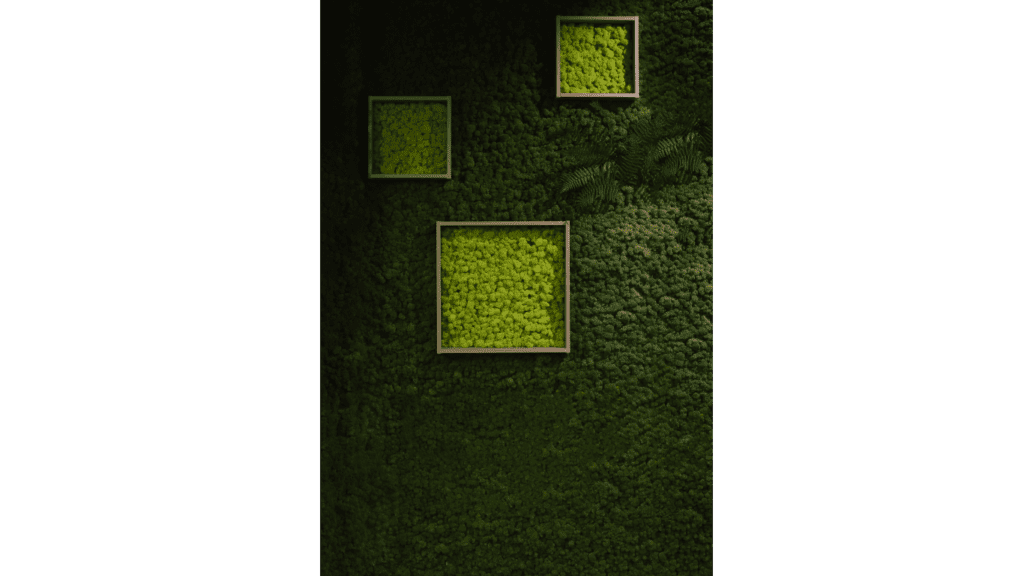
Proper substrate selection is an important aspect of establishing a thriving indoor living moss wall. The substrate serves as the foundation on which the moss will grow, providing essential nutrients, moisture retention, and stability.
One commonly used substrate is a specialized moss board, designed to support moss growth while maintaining a balanced moisture level. These boards are often made of eco-friendly materials like recycled foam or coconut coir, providing an excellent base for the indoor living moss wall to flourish.
Another option is a moss-friendly foam, which offers similar benefits and can be easily shaped to fit various wall designs.
Careful consideration of the substrate ensures that the indoor living moss wall receives the necessary support and nourishment to create a vibrant and sustainable green display, adding a touch of nature’s beauty to any indoor environment and home decor.
Ideal Lighting Conditions
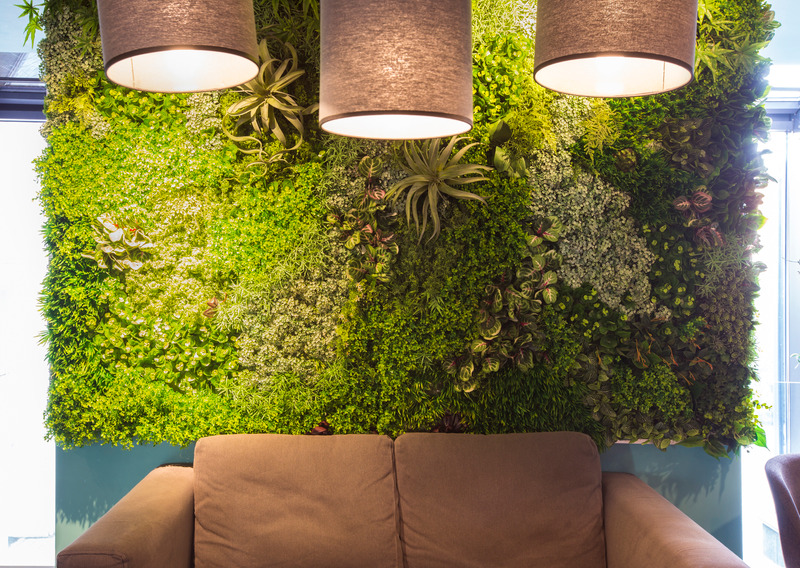
Ideal lighting conditions are crucial in ensuring the health and vibrancy of living moss walls. While moss is known for its ability to thrive in shaded environments, it still requires sufficient light to photosynthesize and maintain its lush green color.
For indoor moss walls, the best lighting is indirect, filtered light. Placing the moss wall near a window with sheer curtains or in a well-lit room without direct sunlight will provide the ideal lighting conditions.
North-facing or east-facing windows are often the most suitable, as they receive gentle, indirect sunlight throughout the day.
On the other hand, avoid placing moss walls in areas with harsh, direct sunlight, as this can lead to the moss drying out and losing its vibrancy.
Fluorescent or LED lights can also be used to supplement natural light if the space lacks adequate illumination. Finding the right balance of light is essential, as too much or too little can adversely affect the moss walls’ growth and overall health.
By providing an optimal lighting environment, you can ensure that your live moss walls remain lush and thriving, adding a touch of natural elegance to your indoor spaces.
Humidity Management

Humidity management is a crucial aspect of maintaining healthy and vibrant living moss walls. Mosses thrive in high-humidity environments, and proper moisture levels are essential for their growth and well-being.
Indoor spaces often have lower humidity levels, making it necessary to take measures to ensure the moss walls receive the moisture they require.
One effective way to manage humidity for living moss walls is to use a humidifier. Humidifiers add moisture to the air, creating a more suitable environment for the moss to flourish. Placing a humidifier in the room where the moss wall is installed can help maintain the optimal humidity level for the moss to thrive.
Additionally, placing a shallow tray of water near the moss wall can increase local humidity levels. As the water evaporates, it adds moisture to the air around the moss wall, creating a microclimate that benefits the moss.
It is important to monitor humidity levels to ensure they remain within the appropriate range for the specific type of moss used in the living moss walls.
Consistent humidity management is essential to prevent the moss from drying out or becoming too waterlogged, as both extremes can be detrimental to its health.
Watering Techniques
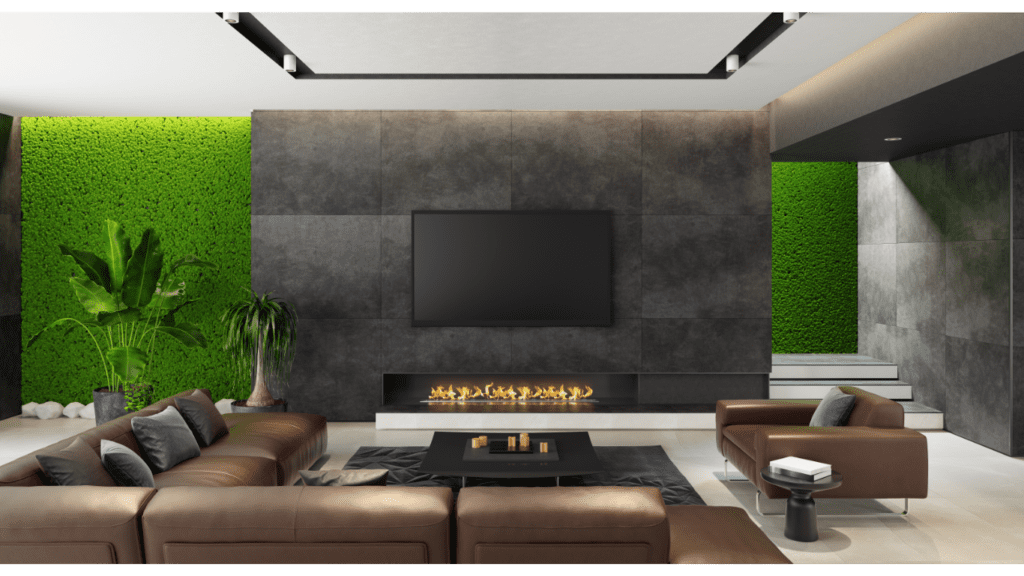
Watering techniques are an essential aspect of caring for both living moss walls and preserved moss walls. Proper watering ensures the moss remains healthy, vibrant, and visually appealing. However, the watering process differs for each type of moss wall:
Watering Techniques for Living Moss Walls
- Misting: Living moss walls benefit from regular misting to maintain moisture levels. Use a spray bottle filled with clean, non-chlorinated water to mist the moss and the surrounding area. Aim for a fine mist to avoid over-saturating the moss.
- Consistency: Establish a consistent watering schedule, depending on the humidity of the environment and the specific moss species used. Moss walls generally require misting every few days to once a week, but it’s essential to adjust the frequency based on the moss’s condition and the ambient humidity.
- Avoid Overwatering: While moss needs moisture to thrive, overwatering can lead to issues like root rot or mold growth. Allow the moss to dry out slightly between watering sessions to prevent waterlogged conditions.
Watering Techniques for Preserved Moss Walls
No Watering Needed: Preserved moss walls do not require any watering since the moss has undergone a preservation process. They maintain their lush appearance without any maintenance, making them an ideal low-maintenance greenery solution.
Additional Watering Tips for Moss Walls
- Use Clean Water: Whether for misting or other watering methods, always use clean, preferably distilled or filtered water. Avoid using chlorinated water, as it can be harmful to moss.
- Monitor Moisture Levels: Keep a close eye on the moss’s condition to assess whether it needs more or less water. Touch the moss gently; if it feels dry, it may require misting, but if it feels overly wet, reduce watering.
- Humidity Consideration: For living moss walls, consider the humidity levels in your indoor space. If the air is naturally dry, you may need to mist more frequently to maintain adequate moisture.
- Spray Uniformly: When misting, ensure you spray the moss and the surrounding area uniformly, so the entire moss wall receives moisture evenly.
Air Circulation
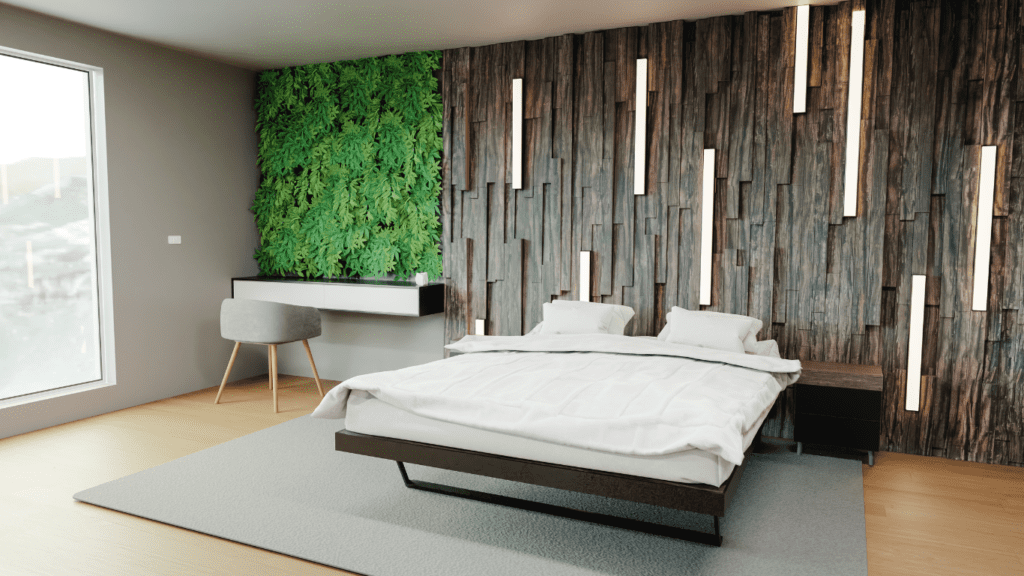
Proper air circulation is essential for maintaining a healthy and thriving living moss wall. Good air circulation helps prevent stagnant air pockets, which can lead to moisture buildup and potential issues like mold or mildew.
Adequate airflow ensures that the moss receives fresh air and helps maintain a balanced microclimate around the living moss wall. There are several ways to promote air circulation around the live moss wall.
Firstly, consider the positioning of the moss wall within the space. Avoid placing the moss wall in areas with limited ventilation, such as tight corners or confined spaces. Instead, position it in open areas where air can circulate freely.
Secondly, use fans or natural airflow to promote circulation. Fans can gently move the air around the moss wall, preventing stillness and creating a healthier environment. Natural airflow from open windows or doors can also help in providing fresh air and keeping the atmosphere well-ventilated.
Furthermore, ensure that no obstructions are blocking the airflow around the living moss wall. Avoid placing objects or furniture too close to the moss, as this may impede the movement of air.
Maintaining proper air circulation around the living moss wall not only contributes to its health but also enhances the overall indoor environment. By fostering a well-ventilated space, you create a conducive environment for the moss to thrive, maintaining its lush green appearance and contributing to the biophilic and serene ambiance of the surrounding space.
Feeding the Moss
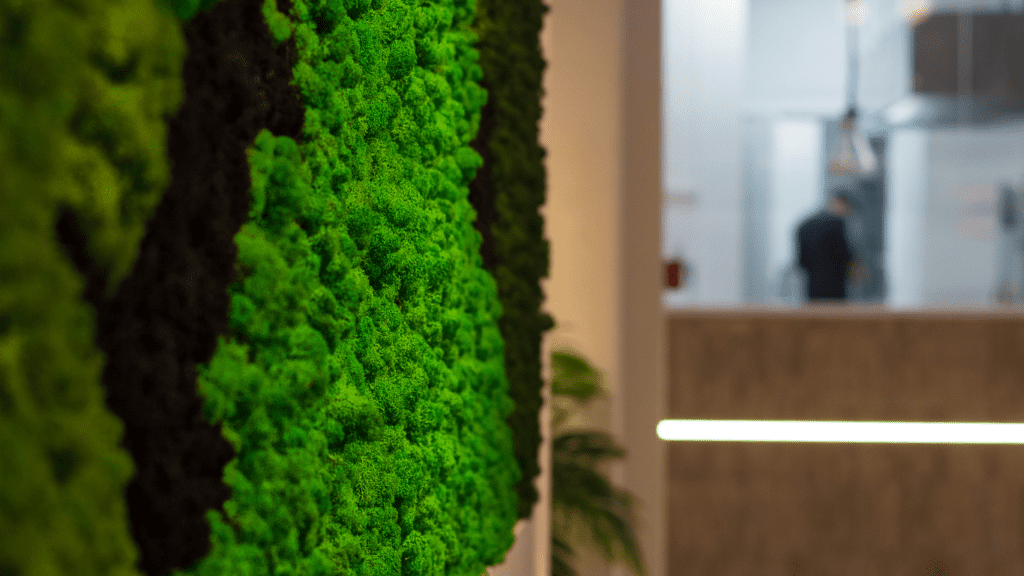
Feeding the living moss wall involves providing essential nutrients to support its growth and health. While mosses are generally low-maintenance plants, they can benefit from occasional nourishment to maintain their vibrant appearance.
One way to feed the moss is by using a specialized liquid moss food, designed to provide essential minerals and nutrients that may be lacking in the indoor environment. These liquid moss foods are usually diluted with water and sprayed onto the moss surface, ensuring the nutrients are readily absorbed.
Another option is using organic fertilizers made from natural materials like seaweed or compost. These fertilizers offer a gentle and eco-friendly approach to nourishing the moss without causing harm to the environment or the living organisms within the moss wall.
You should be mindful of the feeding frequency, as over-fertilizing can be detrimental to the moss and may lead to excess growth or imbalances in the ecosystem. As mosses are efficient in absorbing nutrients, they require minimal feeding, usually only every few months or as needed, depending on the specific species and the health of the wall moss.
Pest Prevention
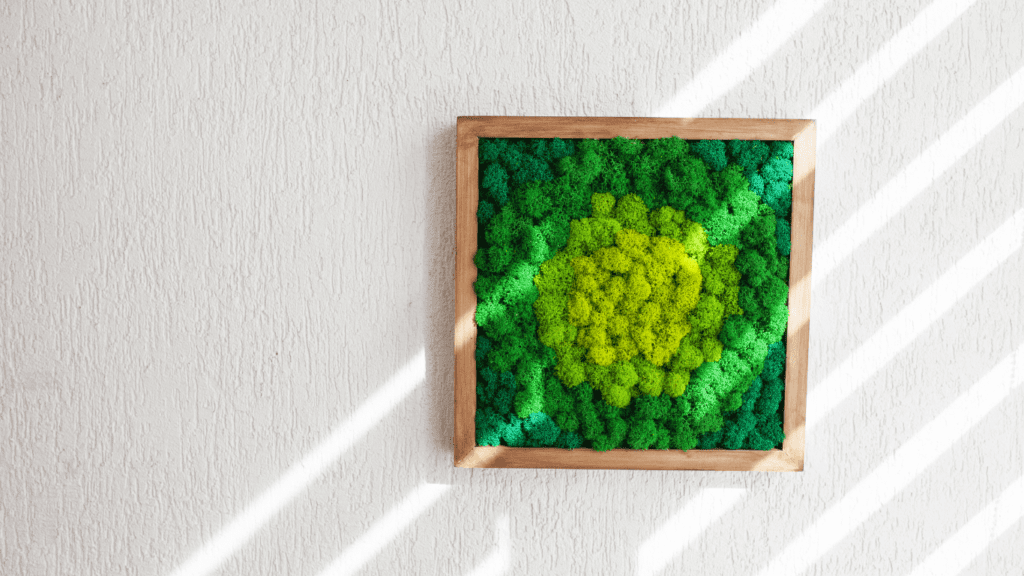
Pest prevention is an essential aspect of maintaining a healthy and thriving living moss wall. While moss is generally resistant to pests and diseases, it is still susceptible to infestations under certain conditions. Taking proactive measures to prevent pests from taking hold will ensure the longevity and visual appeal of the moss wall.
One effective way to prevent pests is by regularly inspecting the indoor moss wall for any signs of infestation. Look for visible pests like insects, mites, or snails that may have found their way onto the moss. Early detection allows for prompt action to address the issue before it becomes a more significant problem.
Maintaining proper hygiene around the moss wall is also essential. Remove any fallen leaves, debris, or decaying plant matter near the moss as these can attract pests and provide hiding places for them.
Avoid overwatering the moss, as stagnant water can create a conducive environment for pests like mosquitoes or fungus gnats. Instead, water the moss sparingly and ensure the wall has good drainage to prevent water from pooling.
If necessary, consider using natural pest control methods like introducing beneficial insects that prey on common moss pests, such as ladybugs or lacewings. These natural predators can help keep pest populations in check without harming the moss or the surrounding environment.
Lastly, if an infestation does occur, address it promptly and avoid using chemical pesticides that may harm the moss and disrupt the delicate ecosystem. Opt for eco-friendly pest control solutions that are safe for the moss and the indoor environment.
Maintenance Schedule
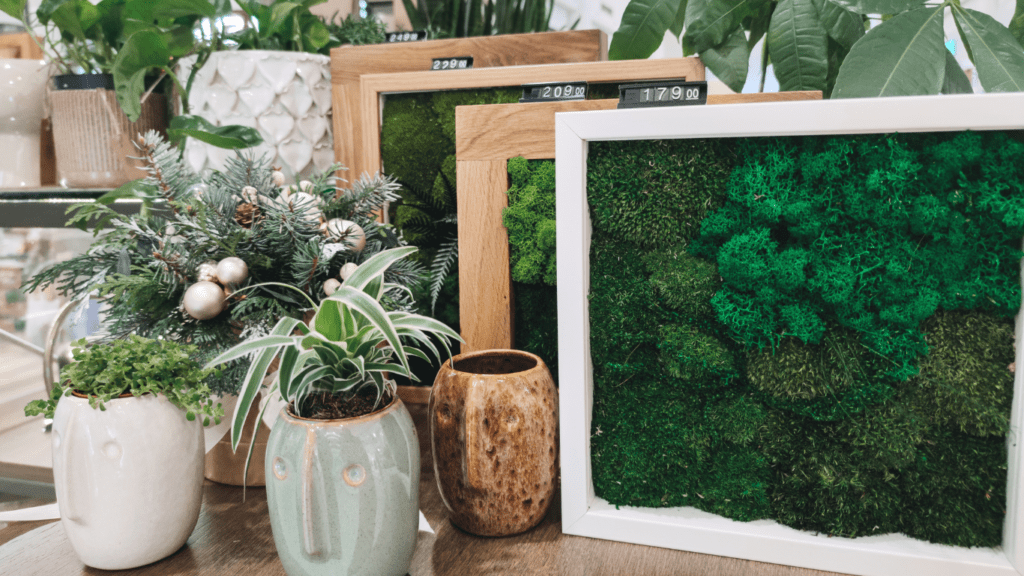
Establishing a maintenance schedule is essential for the long-term health and beauty of indoor moss walls. Tasks in the maintenance schedule should include:
- Regularly inspect the moss for signs of pests or diseases.
- Gently prune overgrown or unhealthy sections of the moss.
- Remove any accumulated debris.
- Monitor moisture levels and humidity for appropriate misting or watering adjustments.
Consistent care ensures the moss wall remains visually captivating and provides desired biophilic benefits. With proper attention, the indoor moss wall thrives as a sustainable and enchanting addition to any interior setting.
Moss Wall Panels
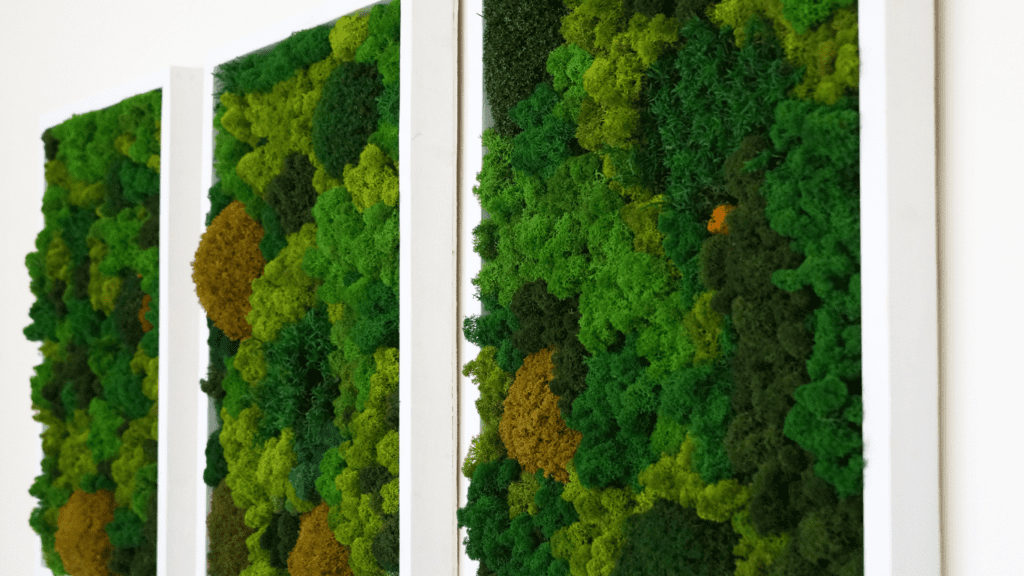
Moss wall panels, also referred to as moss panels or moss art panels are pre-assembled and visually captivating greenery installations designed to bring the beauty of nature indoors.
These panels feature either preserved or living moss arranged in attractive patterns on a sturdy backing material. Preserved moss wall panels showcase natural moss that has undergone a preservation process, ensuring it retains its lush appearance and soft texture without the need for water or sunlight.
On the other hand, living moss wall panels consist of actual live moss cultivated on a substrate attached to the backing material, requiring regular maintenance to sustain their vibrant and thriving state.
Regardless of the type, moss wall panels are favored in interior design and architecture for their versatility and aesthetic appeal. They offer an instant greenery display, easily installed on walls, ceilings, or other surfaces, transforming indoor spaces into serene oases of natural beauty.
With the option to customize moss species, colors, and patterns, these indoor moss wall panels provide a creative and personalized approach to incorporating the serenity of the outdoors into interior environments, making each installation a unique work of living art.
Custom Moss Wall Art
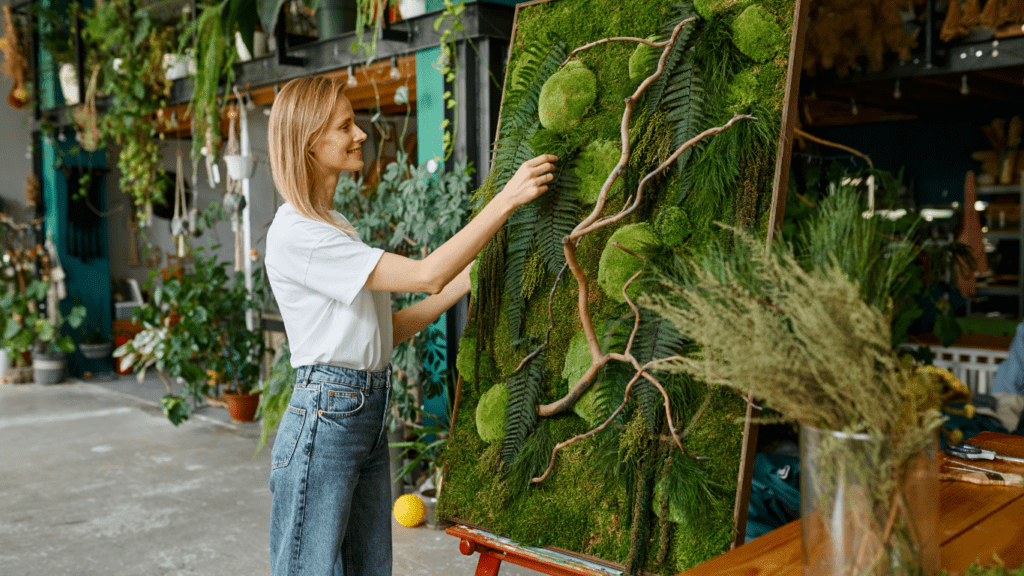
Custom moss walls are personalized and exclusive greenery installations meticulously crafted to suit specific spaces and individual preferences. Working closely with interior designers, or architects, the design team creates unique and one-of-a-kind installations that seamlessly integrate with the intended environment.
These custom moss walls can be tailored with a wide selection of moss varieties, including reindeer moss, cushion moss, sheet moss, and pole moss, allowing for versatile combinations of textures and colors.
The design possibilities are limitless, as personalized patterns, shapes, and even specific color schemes can be incorporated to reflect your personal style.
Custom moss walls are more than just decorative elements; they are living works of art that infuse biophilic elements into your wall decor—transforming your space into enchanting oases of natural beauty and individuality.
Tips—To find custom moss wall art providers, consider using search terms such as “custom moss wall art,” “living moss wall installations,” or “bespoke moss walls.” Be sure to review their portfolios, and customer reviews, and inquire about their expertise in creating and maintaining moss walls. Additionally, you may check with local interior design firms or landscaping companies, as they might be able to recommend reputable moss wall providers in your area.
Conclusion
Embracing the beauty of living moss walls in your indoor spaces brings forth a captivating display of greenery that nurtures the soul and reconnects you with nature’s serenity.
Unlike artificial moss decor, the allure of these mesmerizing installations lies in their authenticity and eco-friendliness, offering a sustainable and biophilic design trend that enhances your well-being.
Whether you choose to shop for pre-assembled moss wall panels or create your own moss wall art masterpiece, the magic of this living art form can transform any space into a sanctuary of green tranquility.
So, frame your living spaces with the enchanting beauty of living moss walls, and experience the wonder of nature’s elegance right at home.
Which moss species do you find most captivating for your own living moss wall art masterpiece? Let us know your favorite and why it appeals to you! Please share in the comments below!
Click here for more inspiration on living moss walls!
Related:

